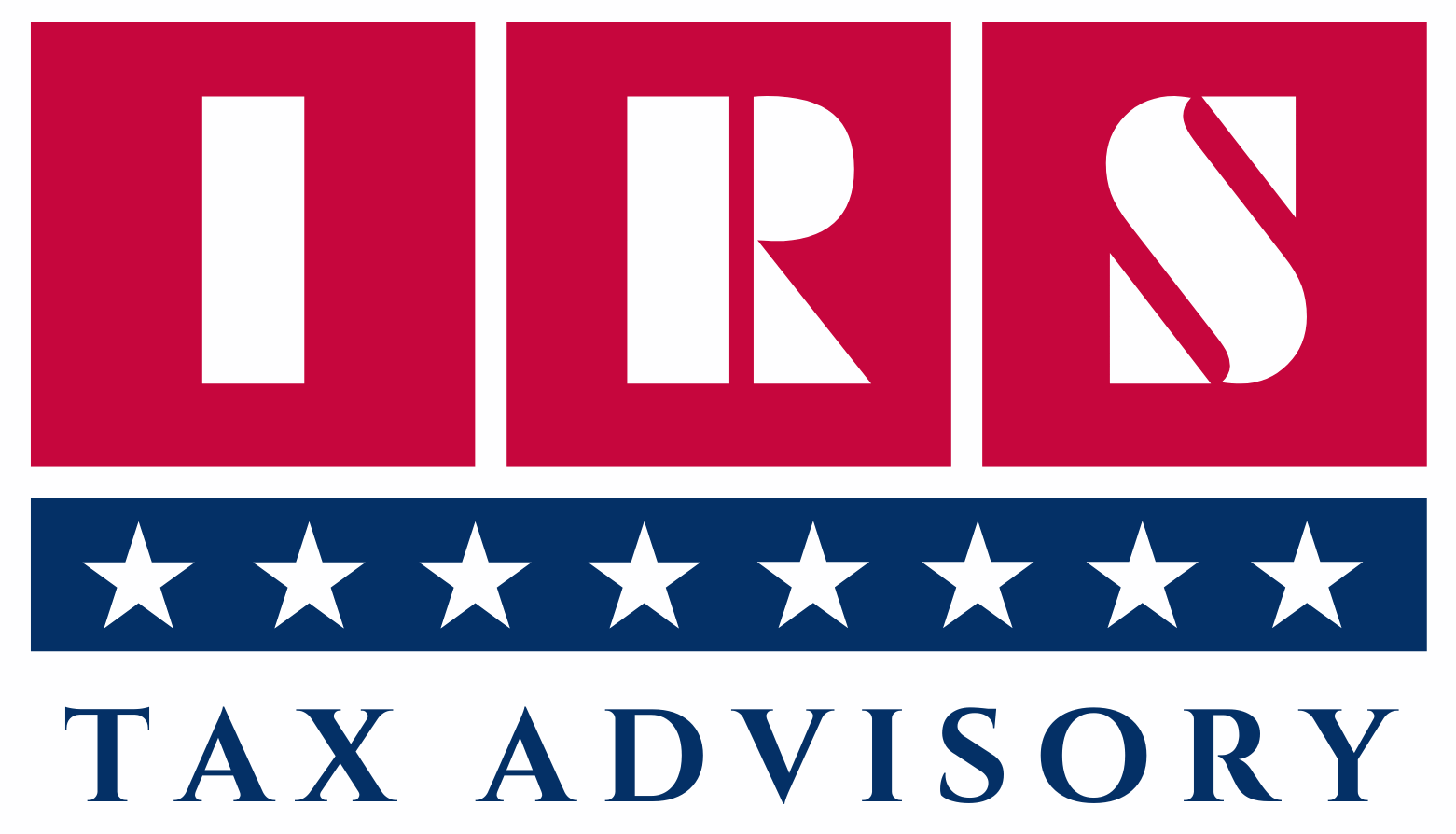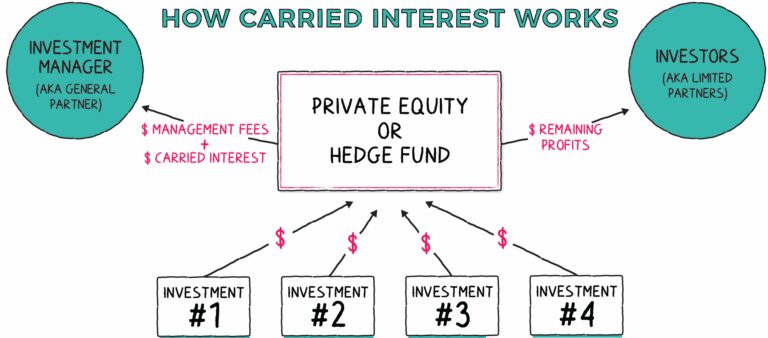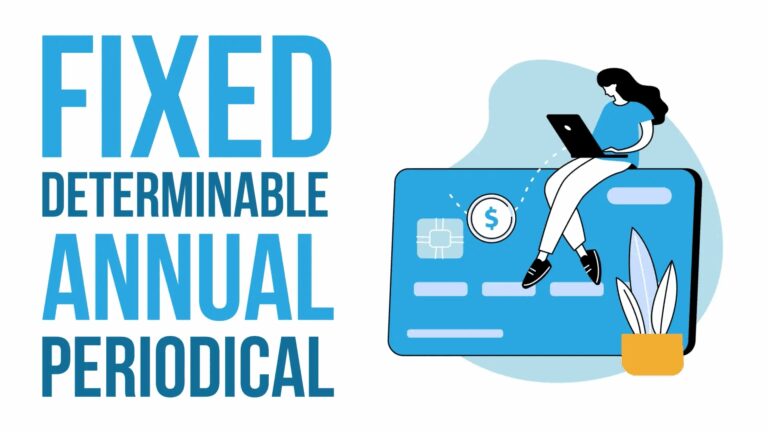PA Employer Withholding Tax– Best Comprehensive Guide In 2025
Table of Contents
PA Employer Withholding Tax is a key component of state payroll tax compliance. Employers operating in the Commonwealth of Pennsylvania are required to withhold Pennsylvania Personal Income Tax (PIT) from employee compensation and remit it to the Pennsylvania Department of Revenue. Failing to do so can result in penalties, interest, and legal action.
This guide provides a comprehensive overview of PA withholding tax obligations, registration, calculation, filing requirements, and compliance practices—optimized for businesses, HR professionals, and tax preparers.
What Is Pennsylvania/PA Employer Withholding Tax?

PA Withholding Tax is a state income tax that employers deduct from employee wages and remit to the Pennsylvania Department of Revenue. The current Personal Income Tax (PIT) rate in Pennsylvania is 3.07% (flat rate for all income levels).
Who Must Withhold PA Income Tax?
Employers are required to withhold PIT if they:
- Maintain a physical location, payroll office, or employees working in Pennsylvania.
- Pay compensation to residents or nonresidents earning income sourced to Pennsylvania.
- Hire remote employees located in PA (even if the employer is out-of-state).
Out-of-state employers with Pennsylvania-based employees are also subject to withholding requirements.
How to Register for PA Employer Withholding Tax
Step-by-Step Employer Registration:
- Register online via PA Business One-Stop Hub.
- Obtain a Revenue ID Number from the PA Department of Revenue.
- Also register with the Pennsylvania Department of Labor & Industry for unemployment compensation and other payroll tax programs.
- Set up a PA-100 Business Tax Registration (required to report withholding).
Types of Income Subject to PA Withholding?
Pennsylvania imposes withholding tax on a broad range of income types to ensure the state collects income tax in a timely manner from both residents and nonresidents who earn income sourced within Pennsylvania. Employers, businesses, and payers are generally required to withhold PA state income tax from payments made to employees and certain other recipients. Below is a comprehensive description of the types of income that are subject to PA withholding:
1. Wages and Salaries
The most common income type subject to PA withholding is wages and salaries paid to employees. This includes:
- Regular pay
- Overtime pay
- Bonuses
- Commissions
- Tips (if reported)
- Sick pay
- Vacation pay
- Severance pay
Employers must withhold Pennsylvania state income tax from these payments based on the employee’s withholding certificate and current tax rates. This withholding applies to both full-time and part-time employees working in Pennsylvania.
2. Supplemental Wages
Supplemental wages, which are payments separate from regular wages, also require PA withholding. Examples include:
- Bonuses paid outside of regular payroll cycles
- Incentive payments
- Awards and prizes related to employment
- Back pay or retroactive pay adjustments
These supplemental wages are subject to withholding just like regular wages to ensure state income tax compliance.
3. Nonresident Employee Income
Nonresidents earning income from Pennsylvania sources are subject to PA withholding on their Pennsylvania-source wages. For example:
- A nonresident employee who works temporarily or part-time in Pennsylvania
- Employees who travel into PA for work assignments
Employers must withhold Pennsylvania state income tax on these wages, ensuring the state collects tax on income earned within its jurisdiction.
4. Certain Pension and Annuity Payments
While most retirement income is exempt from Pennsylvania withholding, certain pension or annuity payments may be subject to withholding if the recipient chooses to have PA tax withheld. Examples:
- Pension or annuity payments that are not exempt under Pennsylvania law
- Distributions from retirement plans for nonresidents or individuals who have not claimed exemption status
Typically, withholding on pension or annuity payments is voluntary and done at the request of the payee.
5. Certain Gambling and Lottery Winnings
Pennsylvania requires withholding on gambling and lottery winnings paid within the state:
- Winnings from Pennsylvania lottery games exceeding a specified threshold
- Casino winnings above the state-mandated amount
- Other gambling-related payments made by PA entities
These payments are subject to PA withholding tax to ensure proper tax reporting and collection.
6. Payments to Independent Contractors and Other Non-Employees
Unlike federal requirements, Pennsylvania generally does not require withholding on payments to independent contractors or other non-employee service providers. However, in certain cases, such as specific payments to nonresidents or entities, withholding may apply if the payments are for Pennsylvania-source income.
7. Unemployment Compensation
Unemployment compensation benefits paid to individuals by the Pennsylvania Department of Labor and Industry are subject to PA withholding if the recipient requests it. Pennsylvania does not require mandatory withholding on unemployment benefits, but individuals can opt to have tax withheld.
8. Other Income Subject to Withholding
- Certain royalties, rents, or lease payments may be subject to withholding if paid to nonresident individuals or entities.
- Distributions from pass-through entities such as partnerships and S corporations may require withholding if the recipient is a nonresident.
- Certain bonuses and other forms of supplemental pay issued by PA employers are subject to withholding.
Summary
In summary, Pennsylvania withholding tax applies primarily to wages, salaries, and supplemental wages paid to employees, including those who are Pennsylvania residents and nonresidents earning income sourced in PA. While withholding generally does not apply to independent contractors or most types of investment income, it does apply to specific income types such as certain gambling winnings and optional withholding on pensions and unemployment benefits.
Employers and payers must carefully determine withholding obligations based on the income type and the residency status of the recipient to comply with Pennsylvania tax laws.
How to Calculate Withholding in Pennsylvania
Calculating Pennsylvania state income tax withholding involves several important steps and considerations. Unlike the federal withholding system, Pennsylvania uses a relatively straightforward flat tax rate, but there are specific rules, exemptions, and procedures to follow for accurate withholding. Here’s an in-depth look at the process:
1. Understand the Pennsylvania State Income Tax Rate
Pennsylvania imposes a flat state income tax rate of 3.07% (as of 2025) on most taxable income. This means that regardless of income level, the withholding rate remains consistent at 3.07%.
- This flat rate applies to wages, salaries, and most other taxable income subject to withholding.
- Local Earned Income Tax (EIT) may also apply depending on the employee’s municipality or school district, but this is separate from state withholding.
2. Determine the Employee’s Gross Wages
The first step in calculating PA withholding is to identify the employee’s gross wages for the pay period. This includes:
- Regular pay
- Overtime pay
- Bonuses and commissions
- Any other taxable compensation paid in that period
Employers should ensure that all forms of taxable compensation are included before applying the withholding rate.
3. Account for Pennsylvania Residency and Work Location
- For residents of Pennsylvania, withholding applies on all wages regardless of where the work is performed.
- For nonresidents, withholding applies only to wages earned for work performed within Pennsylvania.
- Employers must accurately determine the amount of wages subject to PA withholding based on work location and residency.
4. Calculate the Basic State Income Tax Withholding
Apply the flat tax rate of 3.07% directly to the employee’s taxable gross wages for the pay period.
Example
- Employee’s gross wages: $2,000
- PA withholding tax: $2,000 × 3.07% = $61.40
The employer should withhold $61.40 from this paycheck for Pennsylvania state income tax.
5. Consider Local Earned Income Tax (EIT) Withholding
In addition to state withholding, many municipalities and school districts impose a local earned income tax that employers must withhold.
- The local EIT rates vary widely by municipality, typically ranging from 0.5% to over 3%.
- Employers must withhold the correct local EIT based on the employee’s residence.
- Local EIT is in addition to the 3.07% state withholding and is remitted separately to the local tax collector.
6. Adjust for Pennsylvania Exemptions and Deductions
Pennsylvania withholding calculations do not allow for federal withholding allowances or exemptions like the federal system.
- Pennsylvania does not provide withholding exemptions or personal allowance adjustments.
- However, employees may submit a PA Exemption Certificate (REV-419) to their employer to claim exemption from withholding if they meet certain criteria (e.g., no tax liability).
- If an employee claims exemption, no withholding is done on their wages.
7. Handling Supplemental Wages (Bonuses, Commissions, etc.)
Supplemental wages are treated the same as regular wages for PA withholding.
- Apply the flat 3.07% rate directly to the supplemental wage amount.
- If supplemental wages are combined with regular wages in a single paycheck, apply the rate to the combined amount.
8. Withholding on Non-Wage Payments
Withholding on other types of payments (such as certain pension payments or gambling winnings) is usually voluntary or subject to different rules.
- If withholding applies, the payer calculates withholding by multiplying the payment amount by 3.07%.
- Some payments may require withholding only if the recipient requests it.
9. Employer Responsibilities and Remittance
- Employers must withhold the calculated PA income tax from employees’ wages each pay period.
- The withheld amounts must be remitted to the Pennsylvania Department of Revenue according to the employer’s deposit schedule (monthly, quarterly, or annually).
- Employers also file PA-501 (Withholding Tax Return) and submit wage reports periodically.
Summary of the Calculation Steps:
| Step | Description | Example Calculation |
| 1. Determine gross wages | Total taxable wages for the pay period | $2,000 |
| 2. Verify residency/work rules | Confirm employee residency and PA work location | Employee is PA resident |
| 3. Apply state withholding rate | Multiply gross wages by 3.07% | $2,000 × 0.0307 = $61.40 |
| 4. Add local EIT withholding | Calculate local tax based on residence municipality (if applicable) | $2,000 × 1% = $20 (example) |
| 5. Withhold total amount | Total withholding = state + local | $61.40 + $20 = $81.40 |
Additional Notes
- Unlike federal withholding, PA withholding does not use a graduated tax table—just the flat rate.
- Employees should regularly review their withholding status and exemptions.
- Employers must keep detailed payroll records and submit withholding taxes timely to avoid penalties.
- For nonresident employees, careful tracking of days worked in Pennsylvania is essential to ensure correct withholding.
Unlike federal withholding, Pennsylvania does not use a graduated bracket system. Instead, it applies a flat 3.07% PIT rate to all taxable wages.
Formula
Tax Withheld = Gross Taxable Wages × 0.0307
Example
- Employee earns $2,000 in a pay period.
- $2,000 × 0.0307 = $61.40 withheld for PIT
Employers are not required to use allowance-based forms like the federal W-4. Instead, Pennsylvania uses:
- Form REV-419 (Employee’s Nonwithholding Application) – For employees claiming exemption.
- REV-413 (Employer Withholding Guide) – Official guide to calculate withholding.
PA Withholding Tax Deposit Schedules
Pennsylvania Withholding Tax Deposit Schedules
Employers and payers who withhold Pennsylvania state income tax from employee wages or other payments must remit these withheld amounts to the Pennsylvania Department of Revenue on a regular schedule. The frequency of deposits depends on the total amount of withholding tax an employer accumulates and is intended to ensure timely and consistent tax collection.
How Deposit Schedules Are Determined
The Pennsylvania Department of Revenue assigns a deposit schedule to each withholding agent (employer or payer) based on their prior year’s total withholding tax liability or their expected withholding tax during the current year. The deposit schedule influences how often the withheld taxes must be sent to the state.
The Three Deposit Schedules
- Annual Deposit Schedule
- Quarterly Deposit Schedule
- Monthly Deposit Schedule
Each has different filing frequencies and deadlines:
1. Annual Deposit Schedule
- Who qualifies?
Employers who withheld less than $3,000 in Pennsylvania state income tax during the previous calendar year. - Deposit requirement:
Withheld taxes are reported and paid once a year when filing the annual withholding reconciliation return (Form PA-501). - Due date:
The annual withholding reconciliation and payment are due by January 31 following the end of the calendar year. - Notes:
Employers on the annual schedule do not have to make periodic deposits throughout the year but must remit the entire withheld amount by the due date.
2. Quarterly Deposit Schedule
- Who qualifies?
Employers who withheld between $3,000 and $34,999 in Pennsylvania state income tax during the previous calendar year. - Deposit requirement:
Employers must remit withheld taxes quarterly. - Quarterly due dates:
- 1st Quarter (Jan-Mar): Due by April 30
- 2nd Quarter (Apr-Jun): Due by July 31
- 3rd Quarter (Jul-Sep): Due by October 31
- 4th Quarter (Oct-Dec): Due by January 31 of the following year
- Filing:
Along with quarterly payments, employers must file a PA-501 Quarterly Withholding Return.
3. Monthly Deposit Schedule
- Who qualifies?
Employers who withheld $35,000 or more in Pennsylvania state income tax during the previous calendar year. - Deposit requirement:
Employers must remit withheld taxes monthly. - Monthly due dates:
Withholding taxes for the previous month are due by the 15th day of the following month.
For example, withholding for January must be deposited by February 15. - Filing:
Employers must file a PA-501 Monthly Withholding Return each month along with the payment. - Note:
Failure to deposit timely can result in penalties and interest.
Additional Information About Deposit Schedules
- New Employers:
New withholding agents without a prior history must estimate their expected withholding and contact the Pennsylvania Department of Revenue to determine their deposit schedule. - Changing Deposit Schedules:
Deposit schedules can be adjusted annually based on the most recent year’s withholding amounts. - Electronic Filing and Payments:
Pennsylvania strongly encourages employers to remit payments electronically through e-TIDES, the state’s online tax portal. Electronic payments ensure timely receipt and reduce processing errors. - Penalties for Late Deposits:
Late or missed deposits are subject to penalties and interest charges, making adherence to deposit schedules critical.
Summary Table: PA Withholding Deposit Schedules
| Deposit Schedule | Prior Year Withholding Amount | Deposit Frequency | Due Date |
| Annual | Less than $3,000 | Once a year | January 31 following year |
| Quarterly | $3,000 to $34,999 | Quarterly | April 30, July 31, Oct 31, Jan 31 |
| Monthly | $35,000 or more | Monthly | 15th of following month |
Conclusion
Correctly identifying and following your Pennsylvania withholding tax deposit schedule is essential for compliance and avoiding penalties. Employers must assess their withholding levels annually and remit taxes on time — whether annually, quarterly, or monthly. Using Pennsylvania’s e-TIDES online system can greatly simplify the filing and payment process.
Filing Requirements for Employers
Filing Requirements for Employers in Pennsylvania
Employers who withhold Pennsylvania state income tax from employees’ wages must comply with a series of filing and reporting requirements established by the Pennsylvania Department of Revenue. These requirements ensure proper reporting, payment, and recordkeeping of withheld taxes to maintain compliance with state law.
1. Registering for a Withholding Account
Before an employer can begin withholding Pennsylvania state income tax, they must:
- Register for a Pennsylvania Employer Withholding Account with the Department of Revenue.
- Registration is typically done online through the e-TIDES system or by submitting Form PA-100 (Enterprise Registration Form).
- Upon registration, the employer receives a Withholding Account Number used for all filings and payments.
2. Withholding and Depositing Taxes
- Employers must withhold Pennsylvania state income tax (3.07%) from employee wages and remit these taxes to the Department of Revenue according to their assigned deposit schedule (monthly, quarterly, or annually).
- Payments and returns must be filed electronically through e-TIDES unless an exemption applies.
- Failure to withhold or remit on time may result in penalties and interest.
3. Filing Periodic Returns: PA-501
Employers must file Form PA-501 (Employer’s Quarterly or Annual Withholding Tax Return) to report wages paid and taxes withheld.
- Quarterly filers submit PA-501 by the last day of the month following the quarter end:
- Q1 (Jan-Mar) due by April 30
- Q2 (Apr-Jun) due by July 31
- Q3 (Jul-Sep) due by October 31
- Q4 (Oct-Dec) due by January 31 (annual reconciliation)
- Annual filers submit PA-501 once per year by January 31, reporting all wages and withheld taxes for the previous year.
- The return must include:
- Total wages paid subject to PA withholding
- Total amount of PA tax withheld and remitted
- Employee information summary or wage detail (depending on filing requirements)
4. Employee Wage Reporting: Form W-2 and PA W-2
At the end of the calendar year, employers must provide employees with a Form W-2 showing:
- Total wages paid
- Pennsylvania state income tax withheld
- Local Earned Income Tax withheld (if applicable)
Employers must also submit Copy A of Form W-2 and the PA W-3 (Annual Reconciliation of Withholding) to the Pennsylvania Department of Revenue by January 31 of the following year. This reporting can be done electronically via e-TIDES or by paper submission.
5. Local Tax Reporting
Employers must also withhold and remit local Earned Income Tax (EIT) based on the employee’s residence and work location.
- Local tax filing requirements vary by municipality and school district.
- Employers often remit local EIT to local tax collectors or through third-party tax collection agencies.
- Local filings and payments are separate from Pennsylvania state withholding but must be managed concurrently.
6. Recordkeeping
Employers are required to maintain detailed records of:
- Wages paid to employees
- Amounts withheld for Pennsylvania state income tax
- Dates and amounts of tax deposits
- Copies of filed returns and reports
Records should be kept for at least four years to support any potential audits or inquiries.
7. Penalties for Non-Compliance
- Late filing of returns or failure to remit withheld taxes can result in penalties, interest, and potential enforcement actions.
- Penalties can include a percentage of the unpaid tax amount and daily fines.
- Employers should ensure timely filings and accurate withholding to avoid these consequences.
Summary of Employer Filing Requirements
| Requirement | Description | Due Dates |
| Register withholding account | Obtain PA withholding account before payroll | Before withholding |
| Withhold and remit tax | Withhold 3.07% state tax and remit per schedule | Monthly, quarterly, or annual |
| File PA-501 returns | Report wages and withholding | Quarterly: April 30, July 31, Oct 31; Annual: Jan 31 |
| Provide Form W-2 to employees | Year-end wage and tax statement | January 31 |
| Submit W-2s and PA W-3 | Report employee wage and withholding data | January 31 |
| Maintain payroll records | Keep detailed records for at least 4 years | Ongoing |
| Comply with local tax filings | Withhold and remit local EIT | Per local jurisdiction |
Forms Used for PA Employer Withholding
Employers in Pennsylvania who withhold state income tax from employee wages must use several key forms to register, report, remit taxes, and reconcile withholding. Below is a comprehensive list of the main forms involved in Pennsylvania employer withholding, along with descriptions of their functions and filing deadlines.
1. PA-100 (Enterprise Registration Form)
- Purpose:
Used by new employers or businesses to register with the Pennsylvania Department of Revenue to obtain a withholding account number and other tax accounts (e.g., sales tax, employer withholding, corporate taxes). - When to File:
Before beginning withholding or conducting business activities subject to Pennsylvania tax. - How to File:
Electronically via the e-TIDES portal or by mailing the paper form.
2. PA-501 (Employer’s Quarterly or Annual Withholding Tax Return)
- Purpose:
Used to report wages paid and Pennsylvania state income tax withheld from employees. - Filing Frequency:
- Quarterly: If withholding exceeds $3,000 but less than $35,000 annually
- Monthly: If withholding exceeds $35,000 annually (file monthly PA-501 returns)
- Annual: If withholding is under $3,000, employers file annually by January 31.
- Due Dates:
- Quarterly: Last day of month following the quarter (e.g., April 30 for Q1)
- Monthly: 15th of the following month
- Annual: January 31 following the calendar year
- Filing Method:
Electronically via e-TIDES is encouraged; paper filing allowed in some cases.
3. PA W-2 (Wage and Tax Statement)
- Purpose:
Issued to employees to report total wages paid and Pennsylvania state tax withheld during the year. - Filing Requirements:
- Provide Copy B to employees by January 31 following the tax year.
- Employers must submit Copy A of all W-2s to the Pennsylvania Department of Revenue.
- How to File:
Electronically through e-TIDES or by paper submission if allowed.
4. PA W-3 (Annual Reconciliation of Withholding Tax Returns)
- Purpose:
Summarizes all wages and withholding amounts reported on Forms W-2 for the year. - When to File:
Annually by January 31 following the calendar year. - Filing Method:
Filed together with PA W-2s electronically via e-TIDES or by mail.
5. REV-419 (Pennsylvania Exemption Certificate)
- Purpose:
Employees use this form to claim exemption from Pennsylvania withholding if they meet certain criteria (e.g., no PA tax liability expected). - Use by Employers:
Employers must honor the exemption certificate and cease withholding PA tax for the employee upon receipt. - Filing:
Employers keep this form on file; it is not filed with the Department of Revenue.
6. PA-501M (Monthly Withholding Tax Return)
- Purpose:
Specifically for employers who remit withholding monthly due to higher withholding amounts (typically $35,000+ annually). - Due Dates:
15th of the following month for each month’s withholding. - Filing Method:
Filed electronically via e-TIDES.
Additional Notes
- Electronic Filing via e-TIDES:
Pennsylvania strongly encourages employers to file all returns and remit payments electronically through the e-TIDES online portal for accuracy and timeliness. - Local Tax Forms:
Separate from state withholding forms, employers may need to file forms related to local Earned Income Tax (EIT) with local tax collectors or agencies.
Summary Table of Key PA Employer Withholding Forms
| Form | Purpose | Filing Frequency | Due Date | Filing Method |
| PA-100 | Employer registration | One-time | Before withholding begins | e-TIDES or paper |
| PA-501 | Quarterly/annual withholding tax return | Quarterly or Annual | Quarterly: month after quarter; Annual: Jan 31 | e-TIDES or paper |
| PA-501M | Monthly withholding tax return | Monthly | 15th of following month | e-TIDES |
| PA W-2 | Wage and tax statement for employees | Annual | Provide to employees by Jan 31 | e-TIDES or paper |
| PA W-3 | Annual reconciliation of withholding | Annual | January 31 | e-TIDES or paper |
| REV-419 | Employee exemption certificate | As needed | Keep on file; no filing | Employer retention |
Local Earned Income Tax (EIT) in Pennsylvania
What Is Local Earned Income Tax (EIT)?
Local Earned Income Tax (EIT) is a municipal and school district tax imposed on wages, salaries, commissions, and other earned income of residents and nonresidents who work within certain Pennsylvania municipalities.
- Unlike Pennsylvania’s flat 3.07% state income tax, EIT rates vary by locality.
- EIT funds local governments and school districts, supporting public services like schools, police, fire departments, and infrastructure.
- The rates are set by the local taxing authorities and usually range from 0.5% to over 3% depending on the municipality.
Who Must Pay Local EIT?
- Residents: Pay the EIT rate set by their municipality of residence, regardless of where they work.
- Nonresidents: Pay the EIT rate of the municipality where they perform their work in Pennsylvania.
This means someone living in one municipality but working in another might be subject to different EIT rates.
What Income Is Subject to EIT?
EIT applies to:
- Wages and salaries earned from employment.
- Commissions, bonuses, and tips.
- Income from self-employment or business (in some cases, depending on local ordinances).
- Certain pension or retirement income may be exempt, but rules vary by locality.
Employer Responsibilities for EIT
Employers play a critical role in the collection and remittance of EIT:
- Withholding: Employers must withhold local EIT from employees’ wages based on the employee’s residence municipality’s EIT rate.
- Remittance: Employers must remit withheld EIT to the appropriate local tax collector or designated tax agency.
- Reporting: Employers file periodic reports with the local tax collector, showing wages paid and EIT withheld.
Many municipalities use third-party tax collection agencies (like Keystone Collections Group, Berkheimer, or Central Tax Bureau) to handle collections.
How Employers Determine the Correct EIT Rate
- Employees typically complete a local earned income tax form upon hire, indicating their municipality of residence.
- Employers use this information to apply the correct EIT withholding rate.
- If an employee works in multiple municipalities, withholding may be based on residence municipality or prorated based on days worked, depending on local rules.
Filing and Payment Schedules
- EIT withholding schedules vary by tax collector but usually align with state withholding deposit schedules.
- Most local tax collectors require quarterly or monthly filings.
- Employers must comply with deadlines to avoid penalties.
Important Points About EIT
- EIT is in addition to Pennsylvania state withholding tax.
- Failure to withhold or remit EIT properly can lead to penalties from local tax authorities.
- Employees who do not have sufficient withholding may need to file and pay EIT directly to local tax collectors.
- Some municipalities have reciprocal agreements that affect how EIT is applied, though these are limited in Pennsylvania.
Summary
| Aspect | Description |
| Tax type | Local municipal and school district income tax |
| Tax base | Earned income (wages, salaries, commissions) |
| Rate range | Typically 0.5% to over 3%, varies by locality |
| Who pays | Residents (on residence municipality rate), nonresidents (on work location rate) |
| Employer’s role | Withhold EIT, remit to local tax collector, report wages and withholding |
| Collection agencies | Often third-party collectors (e.g., Keystone, Berkheimer) |
| Filing frequency | Usually monthly or quarterly |
Penalties for Non-Compliance with Pennsylvania Withholding Tax
Compliance with Pennsylvania withholding tax laws is crucial for employers and withholding agents. Failure to properly withhold, deposit, report, or file withholding taxes can lead to significant penalties and interest imposed by the Pennsylvania Department of Revenue.
Common Types of Non-Compliance
- Failure to Withhold Tax
Not withholding the required amount of Pennsylvania state income tax from employee wages. - Late or Missing Deposits
Not remitting withheld taxes to the Pennsylvania Department of Revenue by the required due dates. - Failure to File Required Returns
Not filing the PA-501 withholding tax returns (quarterly, monthly, or annual) on time. - Failure to File or Provide Employee Wage Statements
Not issuing Forms W-2 to employees or not filing W-2s and W-3s with the Department of Revenue on time. - Underpayment or Incorrect Payment
Reporting incorrect amounts of withholding tax or remitting less than the actual amount withheld. - Inadequate Recordkeeping
Failure to maintain proper records of wages paid, tax withheld, deposits made, and returns filed.
Penalties for Non-Compliance
Types of Penalties
The Pennsylvania Department of Revenue may impose the following penalties depending on the violation:
1. Late Payment Penalty
- If an employer fails to remit withheld taxes by the due date, a penalty of 10% of the unpaid tax amount is typically imposed.
- Interest is also charged on the unpaid tax from the due date until payment is made.
2. Failure to File Penalty
- A penalty of 5% of the unpaid tax per month (up to a maximum of 25%) may be assessed if the required withholding return (PA-501) is not filed on time.
- If the return is filed late but the tax is paid, penalties may still apply for late filing.
3. Failure to Provide W-2s
- Penalties can apply for failure to furnish W-2 forms to employees or failure to file W-2s with the Department of Revenue by the January 31 deadline.
- The penalty amount can vary depending on how late the forms are provided.
4. Underpayment Penalty
- If an employer underreports or underpays withholding taxes, the Department of Revenue may assess penalties equal to a percentage of the underpaid amount.
- Additional penalties can apply for fraud or intentional disregard of tax rules.
5. Negligence or Fraud Penalties
- More severe penalties apply if non-compliance is due to negligence or intentional fraud.
- These can include larger fines and possible criminal charges in extreme cases.
Interest on Late Payments
- Interest accrues on unpaid tax amounts from the original due date until the payment date.
- The interest rate is set by the Pennsylvania Department of Revenue and may be adjusted periodically.
How to Avoid Penalties
- Register and Obtain a Withholding Account: Ensure timely registration before withholding.
- Withhold the Correct Amount: Use current Pennsylvania withholding rates and update for any legislative changes.
- Deposit Taxes Timely: Follow your assigned deposit schedule (monthly, quarterly, or annually).
- File Returns on Time: Submit PA-501 and other required forms by the deadlines.
- Issue Employee Statements Promptly: Provide W-2 forms by January 31 each year.
- Maintain Accurate Records: Keep detailed payroll and tax records for at least four years.
- Use Electronic Filing: Consider using Pennsylvania’s e-TIDES system for timely and accurate filing and payment.
- Seek Professional Help: Consult with tax professionals or the Department of Revenue if unsure about compliance requirements.
Summary Table: Penalties for PA Withholding Tax Non-Compliance
| Violation | Penalty | Additional Charges |
| Late payment | 10% of unpaid tax | Interest on unpaid amount |
| Failure to file returns | 5% per month up to 25% of unpaid tax | Possible interest |
| Failure to provide W-2 forms | Varies, fines per late form | Possible additional penalties |
| Underpayment or underreporting | Percentage of underpaid tax | Possible fraud penalties |
| Negligence or fraud | Higher fines and possible criminal charges | Interest and legal actions |
FAQs on Pennsylvania Employer Withholding Tax
1. What types of income are subject to Pennsylvania withholding?
Wages, salaries, commissions, bonuses, tips, and certain other compensation paid to employees are subject to Pennsylvania withholding tax at a flat rate of 3.07%.
2. Who is required to withhold Pennsylvania state income tax?
All employers who pay wages or compensation to employees performing services in Pennsylvania must withhold Pennsylvania income tax.
3. How often must employers deposit withheld taxes?
The deposit schedule depends on the amount withheld:
- Monthly if withholding exceeds $35,000 annually
- Quarterly if withholding is between $3,000 and $35,000 annually
- Annually if withholding is less than $3,000 annually
4. What forms do employers need to file for withholding?
Employers must file Form PA-501 quarterly or annually, provide employees with Form W-2, and submit Form PA W-3 annually to reconcile withholding.
5. What is the Local Earned Income Tax (EIT)?
EIT is a local tax levied by municipalities and school districts on earned income of residents and nonresidents working in those localities, with rates varying by jurisdiction.
6. How do employers determine the correct EIT rate to withhold?
Employers use the employee’s residence municipality to determine the local EIT rate for withholding. Employees typically provide this information during onboarding.
7. What are the penalties for failing to comply with Pennsylvania withholding tax laws?
Penalties include late payment fees (10%), failure to file penalties (5% per month up to 25%), interest on unpaid taxes, and possible fines for negligence or fraud.
8. Can employees claim exemption from Pennsylvania withholding?
Yes. Employees who expect no Pennsylvania tax liability may submit Form REV-419 (Pennsylvania Exemption Certificate) to their employer to claim exemption from withholding.
9. How long must employers keep payroll and withholding records?
Employers should retain all payroll, withholding, and tax deposit records for at least four years.
10. Are employers required to file withholding returns electronically?
While not always mandatory, the Pennsylvania Department of Revenue strongly encourages electronic filing and payment through the e-TIDES system.
11. What happens if an employer withholds but does not remit the tax to Pennsylvania?
Failure to remit withheld taxes can result in penalties, interest, and possible enforcement actions, including liens or levies on business assets.
12. How do local tax collectors differ from the Pennsylvania Department of Revenue?
Local tax collectors or third-party agencies handle local EIT collections, separate from state withholding tax, which is administered by the Pennsylvania Department of Revenue.







